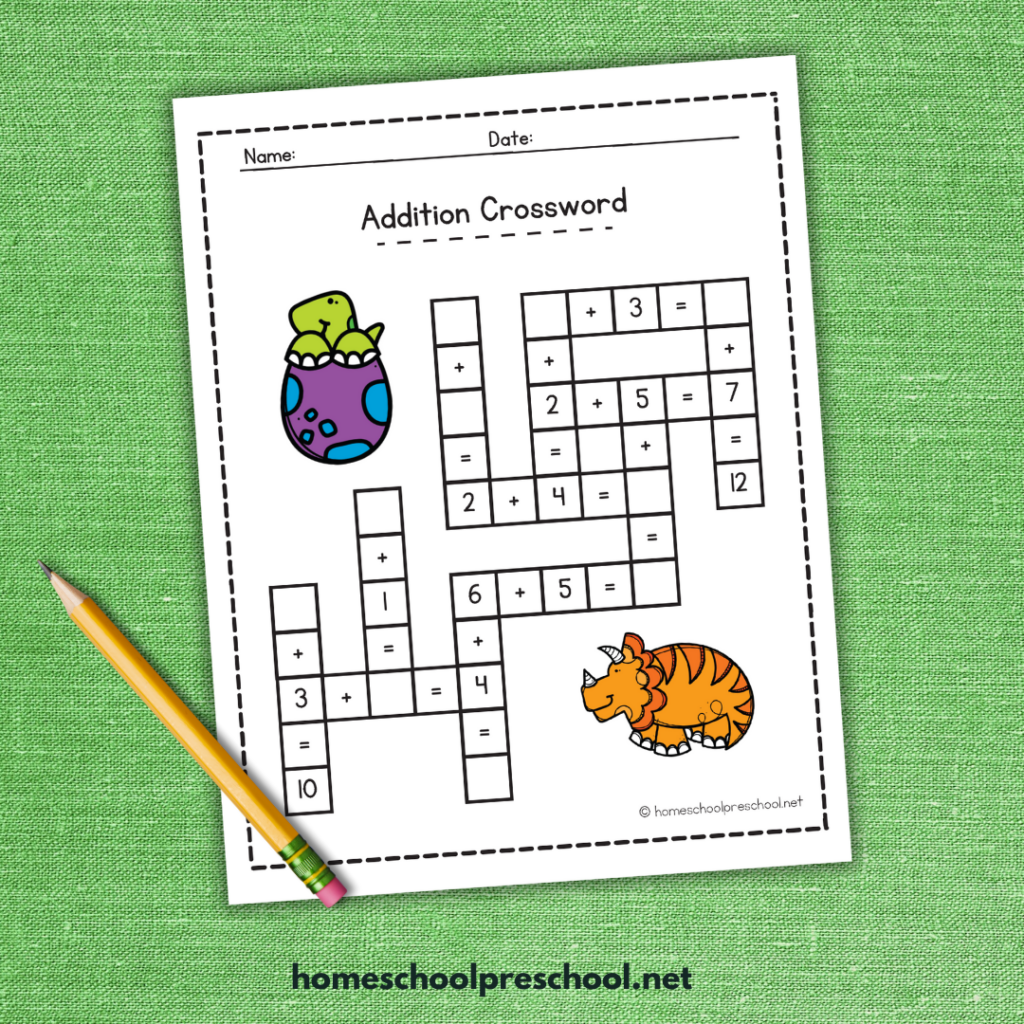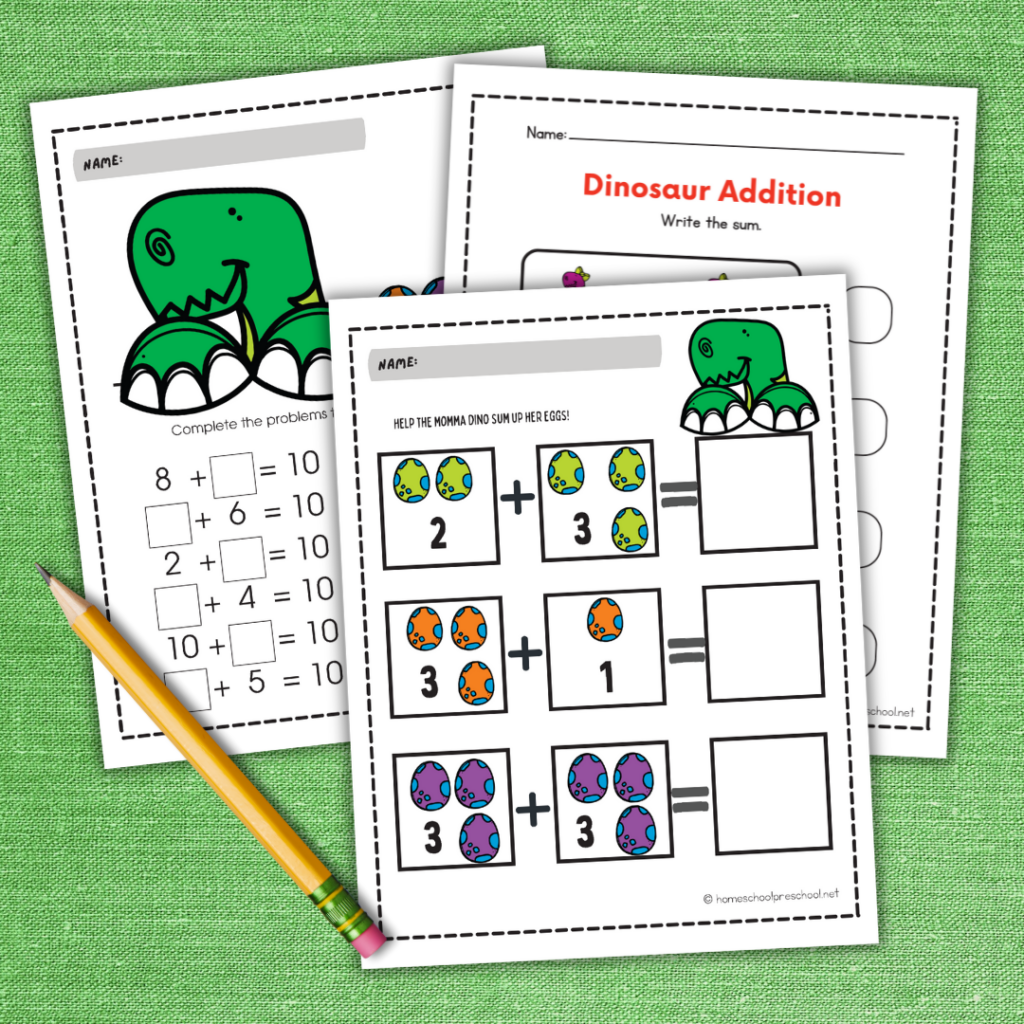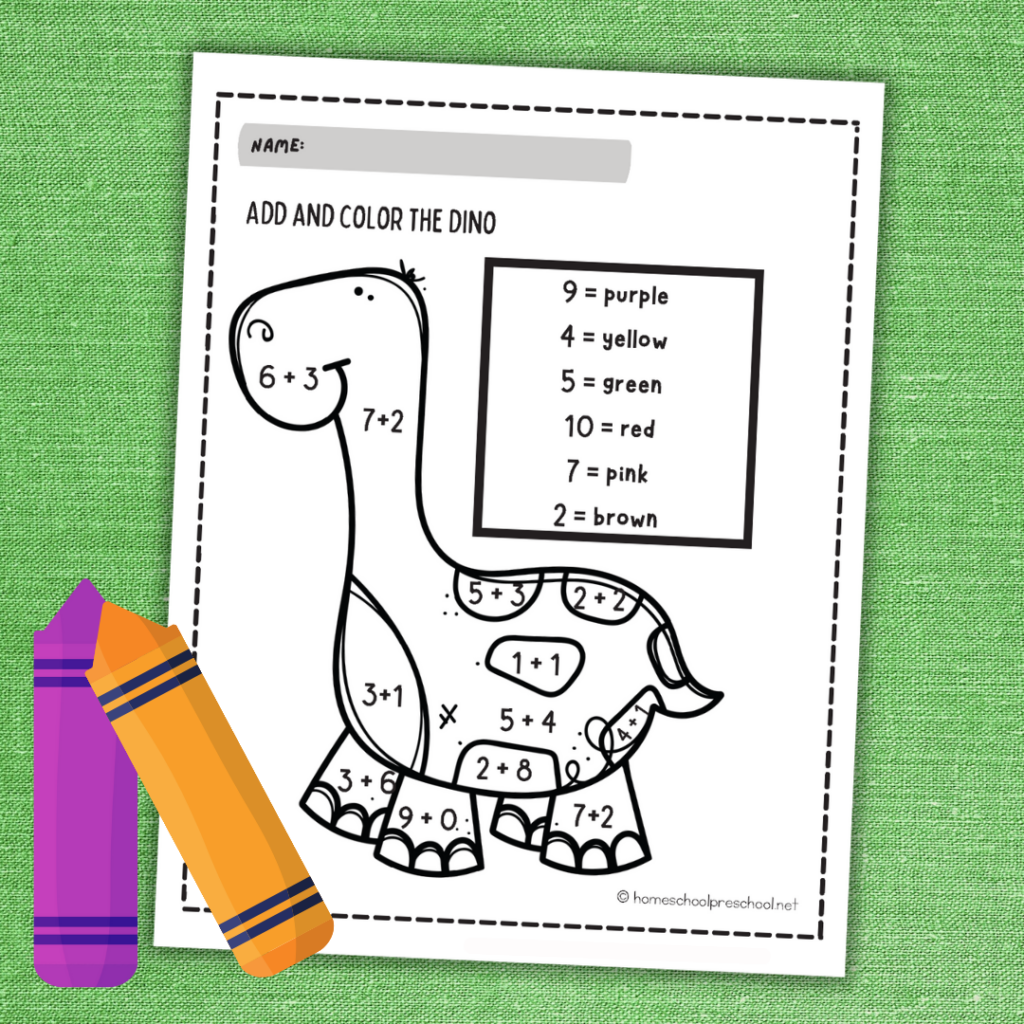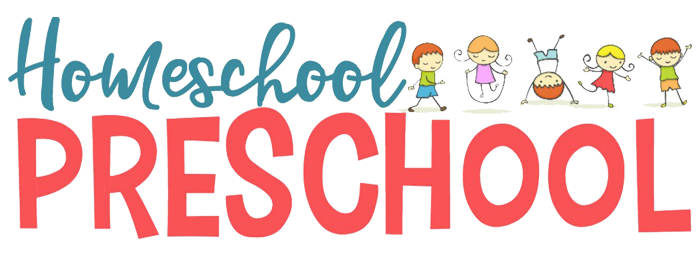Dinosaur Addition Worksheets for Kindergarten
We all know how much little ones love dinosaurs – those colossal creatures that once roamed our planet, leaving behind fascinating fossils and intriguing mysteries. Their monstrous size, unique shapes, and captivating stories are enough to grab any preschooler’s attention. But what if we could harness this dinosaur fascination to help our children learn something as fundamental as addition? Sounds like a roar-some idea, right?
Well, guess what? We’ve done exactly that! We’ve crafted some exciting dinosaur addition worksheets for kindergarten. These dinosaur activities for preschoolers are not just educational but are also packed with fun and creativity, making learning an enjoyable adventure.

Remember when you were a kid and math seemed like a big, scary T-Rex? Not anymore! With these homeschool kindergarten printables, math will seem less like a daunting task and more like a playful game. Our aim is to make early education as engaging and accessible as possible. And what better way to do this than combining the joy of dinosaurs with the power of numbers?
Before we dig into the worksheets (pun intended!), let me share a personal anecdote. When my son was in kindergarten, he was absolutely obsessed with dinosaurs (Triceratops was his favorite). But when it came to math, he was less enthusiastic. Then, one day, I had a light bulb moment – why not combine his love for dinosaurs with his math lessons? The result was a dinosaur-themed addition worksheet. It was a hit! His eyes lit up, and he couldn’t wait to solve the next problem. That was the day I realized the magic of integrating interests with education.
So, grab your paleontologist hats, and let’s embark on this prehistoric numerical journey together. Your kids are about to become dino-mite mathematicians!
Dinosaur Addition Worksheets for Kindergarten
In this collection of math worksheets, you’ll receive ten dinosaur addition pages. These worksheets focus on the following skills:
- Addition with pictures
- Finish the set to make 10
- Solve the word problem
- Subitizing addition
- Color by sum
- Missing addends
- and more!

How to Teach Addition to Kindergarten
Teaching addition to kindergarteners is an exciting and incredibly rewarding journey. It’s that magical moment when the world of numbers starts making sense to them, opening up a universe of possibilities. But we all know it can be a little tricky at times.
Children in this age group learn best through play and hands-on activities. Therefore, it’s essential to create a learning environment that’s engaging, fun, and interactive. Try using manipulatives like blocks, counters, or even their favorite toys to demonstrate addition. Make it a game!
Remember my dinosaur addition worksheet idea? That was a game-changer for my son. He not only started enjoying math but also began looking forward to it. So, let’s make learning addition an adventure for our little ones, not a chore. After all, who said math can’t be fun?
- Apple Addition Worksheets
- Practice Addition Facts with Plastic Eggs
- Easter Addition Worksheets
- Frog Math Game for Counting and Addition

Dinosaur Activities for Kindergarten
Dinosaurs, those fascinating prehistoric creatures, have a special place in the hearts of our little ones. Their towering presence and intriguing names spark a unique sense of wonder and curiosity in children.
Let’s use this interest to create some engaging dinosaur-themed activities for our kindergarteners that not only entertain but also educate.
Dinosaur Tracks: Remember when we talked about sensory play? Here’s a fantastic activity that combines art and sensory experience. All you need are some toy dinosaurs and paints. Dip the dinosaur feet in paint and let your child make dinosaur tracks on paper. It’s a great way to develop fine motor skills while having loads of fun!
Fossil Making: Let’s take them on a journey to the time when dinosaurs roamed the Earth. Using cookie dough and small dinosaur toys, children can create their own dinosaur cookie fossils. This hands-on activity is perfect for enhancing their creativity and imagination.
Dinosaur Story Time: Storytime is always a hit! Grab some dinosaur read-alouds from the library or bookstore. Not only will these stories entertain, but they’ll also introduce new vocabulary and concepts. My little one couldn’t stop talking about ‘herbivores’ and ‘carnivores’ after we read “How Do Dinosaurs Say Goodnight?”.
Dinosaur Math Games: Remember how we made addition fun with dinosaur worksheets? We can extend this to other math concepts too. Use dinosaur counters for sorting, pattern-making, or simple subtraction games.
Dinosaur Dance Party: Yes, you heard it right! Turn on some music and encourage your child to stomp, roar, and move like a dinosaur. It’s a wonderful way to get those little bodies moving and grooving.
Dinosaur Craft: By using basic materials like a paper plate, paint, and construction paper, children can let their imagination run wild as they create their very own colorful paper plate dinosaurs. This craft not only enhances creativity and fine motor skills but also sparks an interest in history and science, making it a fantastic hands-on experience for young learners.
Each of these activities is designed to tap into your child’s natural curiosity about dinosaurs, providing a fun, interactive way to learn.
Remember, the goal is not to overload them with facts, but to ignite their interest and love for learning. And who knows, you might end up having as much fun as they do!

We’ve had quite the prehistoric adventure today, haven’t we? From dinosaur-themed addition worksheets to footprint painting and even a dino dance party, we’ve looked at some fun and engaging ways to bring the world of dinosaurs into our kindergarteners’ learning journey.
Remember, education at this early stage should be all about sparking curiosity, fostering a love for learning, and making the process as enjoyable as possible. By incorporating their interests – like dinosaurs – into their learning, we’re not just teaching them about numbers or colors, but also showing them that learning can be a thrilling adventure.
So, next time your little one roars like a T-Rex or stomps like a Triceratops, remember, you’re not just entertaining a dinosaur enthusiast, but nurturing a future scientist, mathematician, or maybe even a paleontologist.

2 Comments